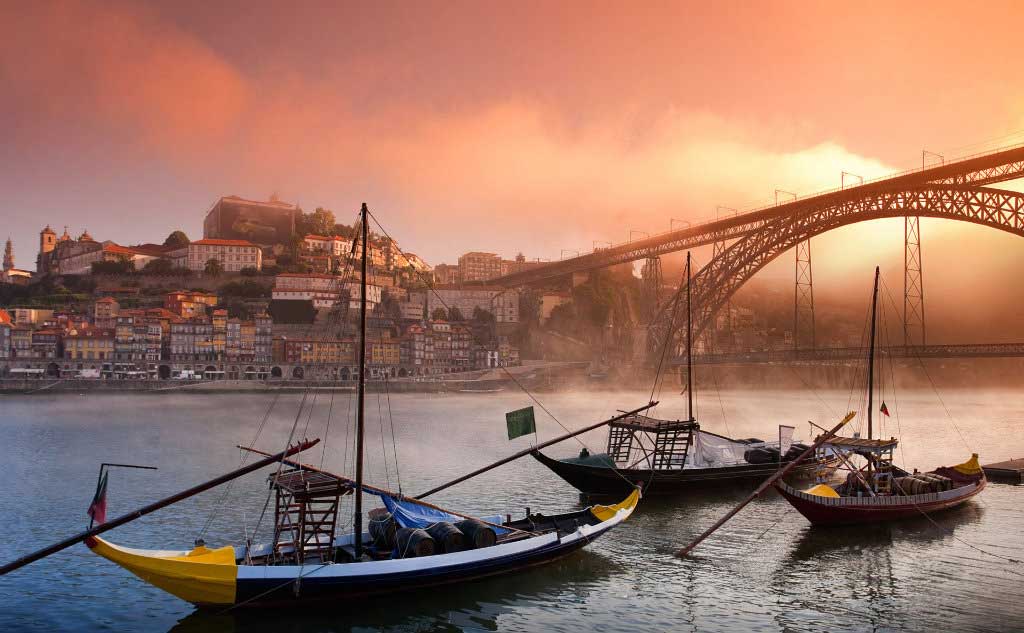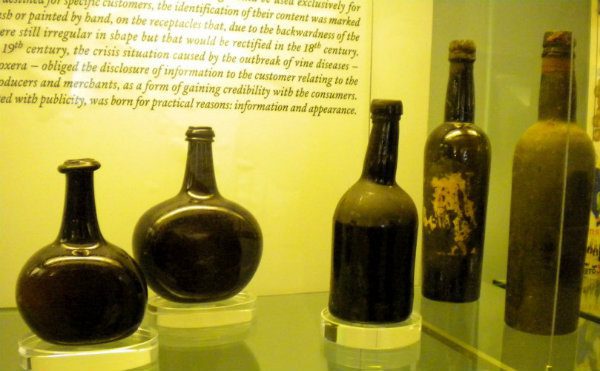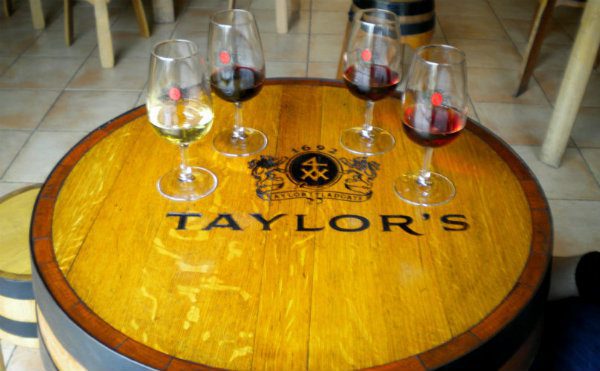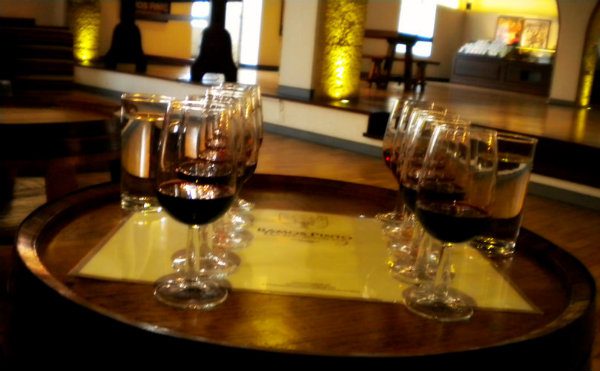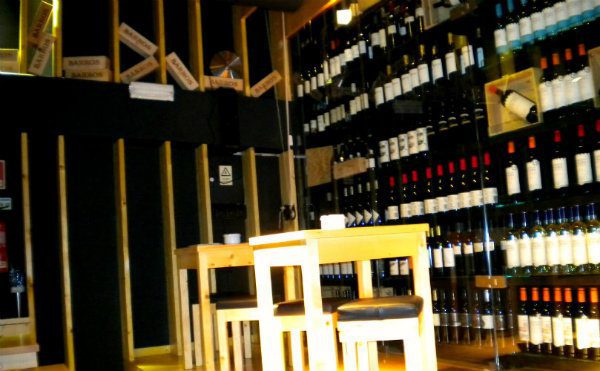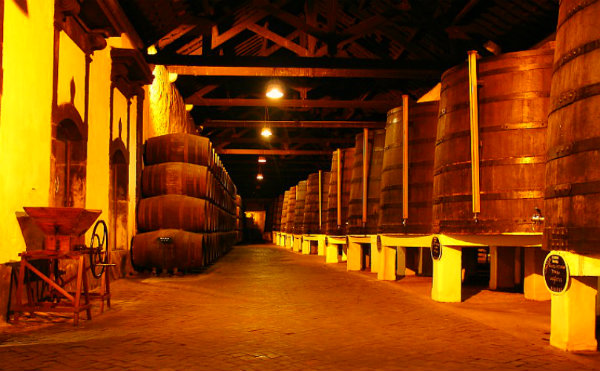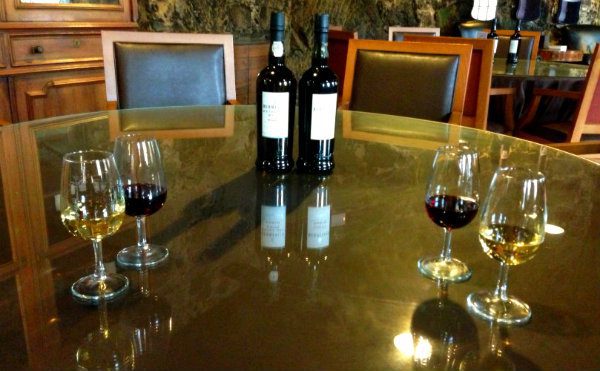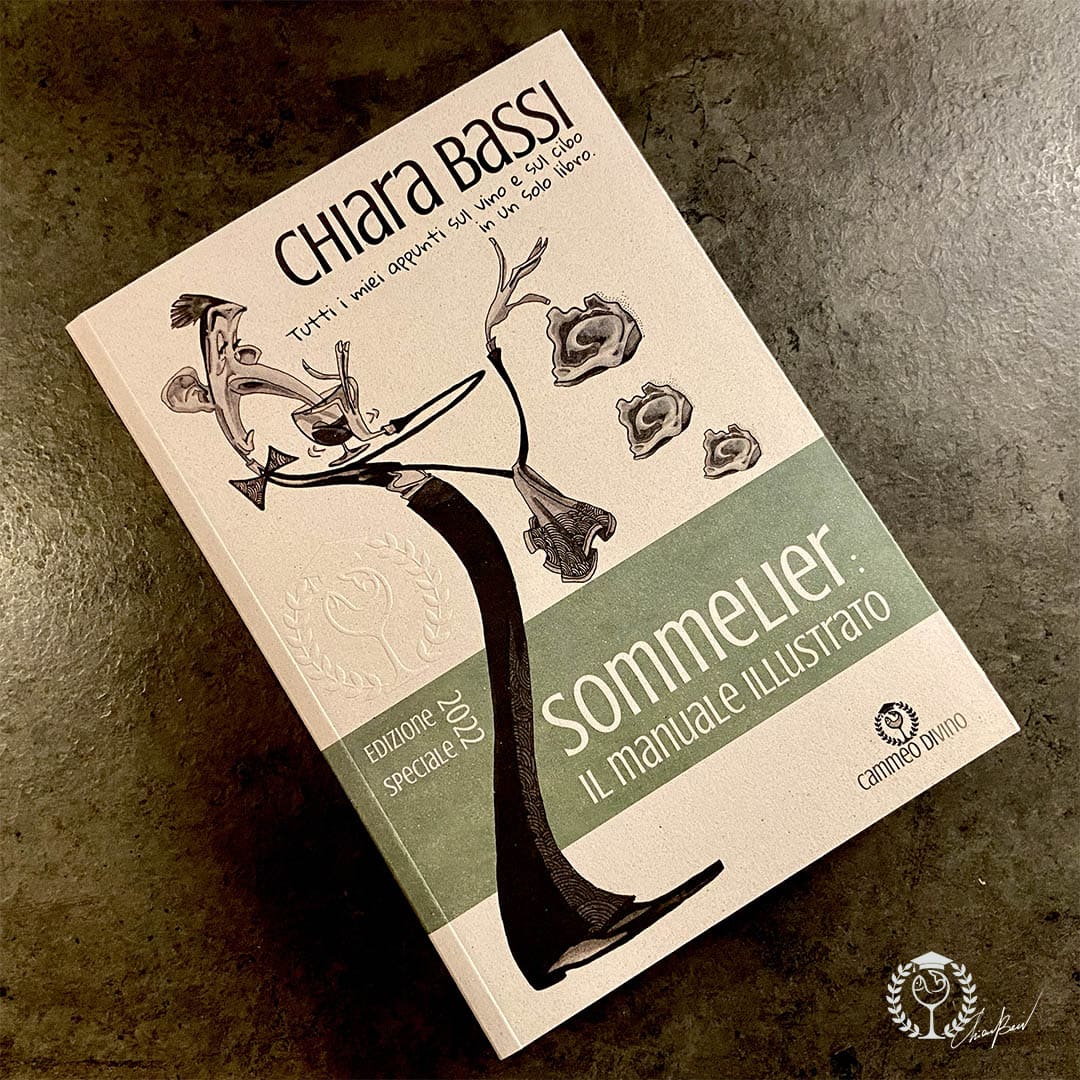I decided to 'dust off' this reportage I did in 2012 for another magazine... because the Porto is a wine that is very close to my heart! In this article, I want to shed some light on the intricate world of Ports, which, guess what, are not just Ruby and not just Sandeman makes them! Happy reading! 🙂
"Wine is sunlight held together by water." Galileo Galilei
'Nueves meses de invierno y tres de infierno', the old Castilian saying echoes between the dry lips of the historical inhabitants of the upper Douro region, the natural mother of the famous Vinho do Porto. More than 100 km east of the city of Oporto, in a difficult and inhospitable land shaped by the Douro river, lies a region laden with charm, whose rugged slopes are laced with narrow terraces that 'impose' on its heroic people the hand-harvesting of its grapes.
The word wine derives from the Sanskrit verb vena, like the Latin name for the goddess Venus, and means LOVE. After all, isn't its journey from the hands of those who touch its sweet grapes, to the lips of those who can appreciate its nuances, charged with passion?
In the collective imagination Port is a red, rather alcoholic wine with a fruity aroma and few know that this is Ruby and it is only one of the 11 types of Port recognised and regulated by the AEVP, the Associação das Empresas de Vinho do Porto. During my trip I tasted all the different types of Port, concluding that for my personal taste, Colheita is the one that really manages to move me to the gut. When accompanied by Coltrane or Piazzolla it is capable of giving me unique moments of pleasure. I also visited the Vinho do Porto Museum, but it did not excite me, although I did learn some interesting facts and I really enjoyed the video showing the construction of the typical boats with which the wine arrived in Porto to age from the Alto Douro region, the natural home of this drink.
Vinho do Porto can, somewhat inaccurately, be described as an invention born of an English need. Between the 17th and 18th centuries, the climate of tension between England and France blocked the latter's wine exports and the English had to 'fall back' on Portuguese wines. Hence began the trade and the history of many Cave do Porto, which still today bear the names of their overseas founders. The longer transportation, however, caused estate problems and the wines that arrived in England, although starting from an excellent base, could certainly not compete with the French wines they were used to. From the need to stop fermentation and thus improve the hold of the vinho, the idea of fortifying it first with Brandy, today with eau-de-vie produced from the same grapes, 1-3 days after harvesting, preserving the high sugar content typical of Port.
Of this Northern capital embraced by the fury of the Atlantic, so mystical and reserved, I will tell you about the character and cunning with which it has been able to exploit a wealth it does not possess, but which has made it famous throughout the world: vinho do Porto. And I will do so from the point of view of its wineries, faces capable of telling you the same story with different expressions.
Consider that this report was written about 3 years before Perlage Suite was born for another newspaper, so you will find a different style from the other articles on my wine blog... and at the time I had yet to start the Sommelier course! Ah, the photos suck... but back then I had neither a smartphone nor a decent camera (it's been almost 10 years!).
Porto: a journey into diversity through 9 wineries
Port Taylor's: the opulence that is not there
Tasting Extra White Branco, LBV, 10 years old and 20 years old tawny. In the upper part of Gaia, in a spot certainly dominated by a very impressive panorama, a winery that, in my opinion, played much more on opulent aesthetics than on a quest for quality. Embellished staff welcome tourists fascinated more by sophisticated packaging than by valuable content. In the tasting room, a large, colourful marquee, dotted at the apex with a portion of a barrel with Taylor's branding surrounded by light spots, more reminiscent of a circus than a historic winery, distracts attention from the details. The seating, on the other hand, I liked a lot: small tables and stools carved from small oak barrels are very well cared for. Also pleasant is the view of a well-kept garden inhabited by colourful peacocks, which in spring is tinged with the colours of the flowers that enliven it. The prices of the tasting are absolutely normal as long as you don't decide to accompany it with a chocolate (3.00€ and absolutely not worth it!) or a piece of cheese, with the latter it really verges on the ridiculous: 5.90€ for a slice in a hermetically sealed plastic bag pulled out of a drawer behind the elegant counter. I may be a slave to perfection, but I honestly found it embarrassing. As for the wines, again little substance unless you go straight for the old tawny. The 20 years old is very pleasant, with notes of tobacco, dried fruit and spices emanating from a vinho with a rather oxidised and warm colour, tending towards imperial topaz, truly remarkable. On leaving the tasting room, after a short driveway of lemon trees, you find the entrance to the panoramic restaurant framed by Doric columns.
Porto Que Veda: the tourist trap
If you happen to take even one trip on the funicular, you will probably be given a voucher for a tasting at this winery. Personally, I can't understand the optics with which this happens: the average tourist has very little knowledge about vinho do Porto and finds himself in a room set up with a few questionable-looking barrels on the ground floor, and a truly horrible tasting room on the first floor. Compulsive saleswomen invite you to discover the 'history of the winery and vinho do Porto' in panels hung on the wall with a few lines in different languages and nothing to tell. At the end a very small tasting to choose between the extra dry, the Rosé, the fine Ruby and the fine Tawny, of which the only one that can be saved is the fine Ruby. To taste the other wines you obviously have to pay, but given the quality of these, the sadness of the place and the 'aggressiveness' of the sales staff I literally ran away without going any further.
Porto Ramos Pinto: the kiss of wine
Expert tasting: LBV, Vintage '07, 10 years old, 20 years old, 30 years old. An elegant light-coloured building stands out on the banks of the Douro in Gaia and guards a treasure of unparalleled beauty: these are the offices of Ramos Pinto. They are not actually open to visitors, but I admit that sneaking in was one of the wisest things I did: the azulejos are truly splendid. At the exit, immediately to the right, an uphill patio leads you to the tasting room, where there is also a small shop (I bought a shopping bag and a print with the winery's typical image). Everything is neat and elegant, the motifs reminding me of Secessionist Paris. Packaging at Ramos Pinto is a way of life: always punctual, precise and sophisticated. I had a tasting of Vinho do Porto Expert (just 16€ for 5 wonderful glasses of the highest quality) which included an LBV that was striking for its cocoa notes, a Vintage 2007 that would have been perfect for the best Stilton, a Tawny 10 anos in which hints of walnut predominated over everything, a really wonderful Tawny 20 anos, the best of the whole tasting, with its oxidised colour, very clear and with cat's eye reflections and hints of hazelnuts and honey. We finished with a Tawny 30 anos in which the notes of dried fruit were dominated by tobacco, the tannins were nuanced and a slight acidity enveloped the tongue. Simply precious.
Port Kopke: the perfect vintage
Tasting Fine Tawny and Colheita 1998. Porto's oldest winery was founded by a German family in 1638 and is currently famous for its colheita. Personally, I count it in my personal Triad of the best wineries in Porto. Also wonderful are the bottles still written by hand. Essence and substance. We entered a rather spartan but neat tasting room and were served a Fine Tawny and a 1998 Colheita paired with truly superior fine chocolate. The colour of the Colheita almost amaranth enchanted me, the hazelnut scent and that perfect taste where honey blends with ripe figs intoxicated my tongue. A mystical experience that I decided to repeat at home by buying a couple of bottles. For meditation.
Porto Messias: the age of speculation
Tasting 10 years old tawny. What struck me about this winery was its ability to play on people's age to sell wine rather than its quality. Everywhere you can find bottles with your year of birth on them and the inexperienced consumer can be captivated by this emotional side to complete his purchase. I admit that my first Port in the land of conquerors was indeed a Messias Tawny 10 anos tasted in Viana do Castelo, a city in the Portuguese far north accessed by an iron bridge designed by Eiffel himself at the end of the 19th century, rich in history, architecture, and from which, travelling just 5 km northwards, you can reach Ingreja S. Luzia, from whose dome you can admire one of the most beautiful views in the world. In a new and well-kept wine shop, with a terribly charming owner whose nose line I remember perfectly, I tasted this Port of mediocre quality that only convinced me because I had not yet drunk anything else. Founded in 1926, this young winery doesn't have too much to give you except a nice souvenir to offer the dust of the houses that live there.
Porto Barros: Precision without emotion
Tasting reserve tawny and smoked ham. An uninteresting Tawny Reserva tasted together with a delicious knife-cut smoked ham in a nice Barros testimonial in the city centre. Totally unable to give me emotions.
Porto Ferreira: The woman who surpassed man
Of the legendary figure who made the history of vinho do Porto, Dona Antònia Adelaide Ferreira, one can admire her table wines: I drank a truly marvellous Douro Branco, as acidulous and floral as our Traminer. It is a pity, however, that I cannot say the same for his Fine Ruby, by far the worst thing I have ever tasted in my life, so much so that I had to leave it in my glass. The Branco Reserva is also nothing exceptional, decidedly unworthy of the story they try so hard to tell. The winery is nevertheless worth a visit (the basic one starts at 5.00€ and includes two tastings, while the top one costs 16.00€ and includes five tastings in an intimate room decorated with beautiful azulejos), a Portuguese guide will tell you about the legendary life of this woman who was able to put her feet up on the heads of so many men in proud Portugal some two centuries ago, leading you amidst truly enormous, magnificent wooden barrels that are still in use today, where the slippery dampness of the floors once probably traversed by horses or donkeys will make you relive a piece of the city's history.
Porto Quinta do Noval: the soul of globalisation
Reserve Ruby tasting. Of Noval, well known abroad, with more than two centuries of history, capable of defining the classification of Tawny bottles later adopted also by other producers, I remember a small shop for the economic soul of this winery on the banks of the Douro. In a 'without infamy and without praise' environment, rather dark and not particularly refined, you can drink a Reserve Ruby that I would define as commercial, tending towards Sandeman to make a point. In short, it's like eating Italian abroad. Besides, if you eat Mexican food in Italy without ever having been to Mexico, you won't understand the difference.
Port Burmester: tradition renewed
Tasting Lagrima, Ruby Reserva 'Sottovoce', Fine Tawny and 20 years old tawny. Another winery in my personal triad of the best (along with Kopke and Ramos Pinto), Burmester is a must for lovers of vinho do Porto. Here tradition and innovation come together in a perfect blend, producing wines full of passion. In a truly romantic half-light, ancient carriages stand out against the Douro. You can really breathe in the love for the work, which has remained intact over the years. By far, it is the winery that, overall, I loved the most. In terms of quality it competes with Kopke, another excellent vinho do Porto, but if we add the sincere desire they have to make you understand the origins of their product, as well as the quality of the tasting, the explanatory video (dubbed in Italian) and the beauty of the place, they absolutely have the top spot. The fine Tawny and the Lagrima are not to be missed, but the Sottovoce (Ruby Reserve) and the 20 year old Tawny are also really delicious.
And do you know any of these port wine cellars? What do you think? Scroll down the page and leave me a comment!
Cheers 🍷
Chiara

